1. A separate date
Easter is one of the two biggest Christian holidays worldwide, but it originated long before organized religion, as a celebration of spring, joy and rebirth. There's no fixed date in the calendar for it: in Western Christianity (the Catholic and Protestant denominations), according to the Gregorian calendar, Easter always falls on a Sunday between March 22nd and April 25th, following the first astronomical full moon after the spring equinox; Eastern Christianity, on the other hand, bases its calculations on the Julian Calendar, which is currently behind the Gregorian one by 13 days. Orthodox Easter therefore varies between April 4th and May 8th, so it rarely overlaps with the Western one, and mostly falls later in the year.
While we've been assaulted for weeks now by images of chocolate eggs and bunnies in store window displays, few Montrealers for whom Easter is a religious holiday seem to care much about the religious aspect of it - they just enjoy their day off, eat a lavish lunch and spend time with families. On the contrary, for Orthodox communities (mostly Russian, Ukrainian, Romanian, Bulgarian, Greek and Coptic) in the city, this is the most important holiday of the year. It seems fitting that they would have a separate date to celebrate it.
2. Diversity of customs
Even within one single culture, the manifestations of one holiday tend not to be unitary. In a multicultural city like Montreal, the ethic immigrant communities have maintained their traditions fiercely, passing them down through generations. From the decorations on their eggs, to the shape of the Easter buns, to the time of the church services, each cultural group manifests their unique Easter customs. Moreover, some of these customs are so old that they seem to have been lost in the home country.
For someone who's not Orthodox, it's easy to miss the ways in which these communities prepare themselves for their biggest feast. The most visible mention of it might be Easter bazaars. The Ukrainian community in Montreal is very vocal and staunch in displaying their customs, even non-Easter related, so that on visiting an Easter bazaar this year, between end of March and Palm Sunday, you also had the chance to admire (and buy) traditional motif clothing or have a typical lunch of borscht and cabbage rolls.
3. Best painted eggs
Even before Christianity, painted eggs, as symbols of spring, were believed to have magic powers, to bring luck and protect the home against demons and evil spirits; the shells of Easter eggs were kept and sprinkled over the soil in gardens to provide for fertility and richer crops.
There are two types of traditional Easter eggs in Eastern-European cultures. One type is for eating: commonly painted red (to commemorate Jesus' blood), they are broken immediately after midnight mass in joyous acknowledgement that "Christ Is Risen!". Sometimes the hard-boiled painted eggs can be adorned with natural patterns (leaves) and there's, of course, a going-back-to-origins trend toward using natural resources, like onions or beets, to dye the eggshell. Absent that, egg dye and egg sleeves are found for sale in Montreal stores that cater to the respective Orthodox communities. (Here's the local Romanian website compiling a list of where to buy egg dye within the city area - it's a concern! I got mine sent from Romania, because my parents apparently don't believe we have proper stores here.)
The other type of Easter eggs is the decorative painted ones, raised to the level of true objects of art. Eggshells are emptied of yolk and egg white, then covered in a wax mold, on which intricate designs (sometimes religious, but not only) are traced with a special pen. These exquisitely embellished Easter eggs are more typical for Ukraine and Poland, and got popularized in Canada as "pysanky" - but some parts of eastern Romania do them too. This time of the year there will be cheaper wooden versions for sale in stores, but the real deal is more likely to be available in one of the Ukrainian bazaars.
4. Traditional Easter breads and buns
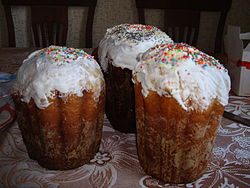 Bread is the commonest symbol of home, of plenty and gratitude. Though generally not dissimilar in offer from the traditional Italian or Portuguese fare, typical Easter sweet bread comes with its own special twist in each Orthodox community. Light and fluffy in texture, all of these pastries may or may not contain bits of raisin, nuts or even Turkish delight - but what they do have in common is a lot of eggs mixed in the dough. The Slavic peoples have the kulich(Russian) or babka (Ukrainian), tall, cylindrical in shape, sometimes glazed. There's also a Polish-style babka, which looks more like a typical ring cake. The Greek brag of their braided buns with red eggs boiled inside, which look a lot like the Portuguese folar de pascoa. The
Bread is the commonest symbol of home, of plenty and gratitude. Though generally not dissimilar in offer from the traditional Italian or Portuguese fare, typical Easter sweet bread comes with its own special twist in each Orthodox community. Light and fluffy in texture, all of these pastries may or may not contain bits of raisin, nuts or even Turkish delight - but what they do have in common is a lot of eggs mixed in the dough. The Slavic peoples have the kulich(Russian) or babka (Ukrainian), tall, cylindrical in shape, sometimes glazed. There's also a Polish-style babka, which looks more like a typical ring cake. The Greek brag of their braided buns with red eggs boiled inside, which look a lot like the Portuguese folar de pascoa. The 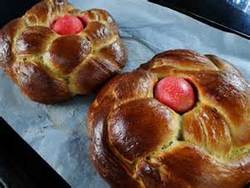 Romanian-typical Easter bread usually contains cheese. Another type of sweet bread served only on holidays makes use of a good amount of sweetened crushed walnuts or poppyseed grains.
Romanian-typical Easter bread usually contains cheese. Another type of sweet bread served only on holidays makes use of a good amount of sweetened crushed walnuts or poppyseed grains.
In Montreal you can order any of these goodies in the specific stores or bakeries (think Rosemont for Polish-Ukrainian, Park Extension for Greek, Cote-des-Neiges/Plamondon for Russian, Decarie for Romanian etc.) - sometimes even weeks before Easter.
5. Amazing ceremonies and sense of community
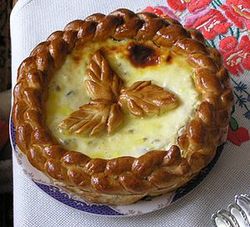 In some ethnic and immigrant communities throughout Canada, religion has high stakes; Orthodoxism at least is strongly intertwined with the belonging to a cultural community. Certain aspects of preserving a heritage - and Easter celebration is a perfect illustration of this - bring entire parishes together, at least twice a year.This year I came to realize that all Orthodox denominations in Montreal do attend to Good Week religious rituals that are richer and more elaborate than I'd ever taken part in in my Transylvanian birthplace.
In some ethnic and immigrant communities throughout Canada, religion has high stakes; Orthodoxism at least is strongly intertwined with the belonging to a cultural community. Certain aspects of preserving a heritage - and Easter celebration is a perfect illustration of this - bring entire parishes together, at least twice a year.This year I came to realize that all Orthodox denominations in Montreal do attend to Good Week religious rituals that are richer and more elaborate than I'd ever taken part in in my Transylvanian birthplace.
One Easter custom preserved in Montreal that was new to me is the blessing of the food basket on Easter day: parishioners bring to church, for the priest's blessing, baskets containing a few staple foods: eggs painted red, bread, some meats, cheese, butter, salt and pepper - these represent the first meal they will have right after Ressurection. In Ukrainian churches this can happen on Good Saturday or Good Sunday after morning service. In my (smaller, I presume) Romanian church, people came forward with baskets after midnight service. My father says this custom was respected back in his village when he was young, but apparently it didn't get carried on to Romanian city life.
On Good Friday, I knew (but again, I'd never witnessed) that the congregation walks around the church carrying an icon embroidered on cloth, which represents the Crucifixion - commemorating the burial of Christ's earthly body. This year I attended the corresponding Greek ceremony, which appears to be a more complex and joyful ritual. The Holy Epitaph - a tall litter-like structure made of flowers - is paraded throughout the neighbourhood after dark, accompanied by altar boys and flower girls dressed in white, carrying baskets of petals. The procession meanders through the pre-blocked streets of the neighbourhood, discreetly watched over by police. Retracing its way back to the church, the crowd then dismantles the Epitaph to take the flowers home. Taking part in this communal walk was exhilarating for me: I will admit that hearing a ceremony in an unknown language may lend it a more solemn, striking air, but I was also impressed by the numbers in attendance and the organization of it all.
A Greek-Canadian friend also shared vivid memories from a typical Good Saturday service, where a "mini-ressurection" is role-played: "The priest and altar boys simulate the rock moving from the grave where Jesus was placed. In most churches it's a pretty small noise, but at our church we used to even light up firecrackers in garbage cans[...] to make a loud noise and smoke. The people in the pews bang their hands on the wood of the pews and on the balcony upstairs, the priest would save old chairs and tables he wanted to throw away and would let us bang them and break them."
Still, my favourite Easter ceremony, the climax of the biblical story, remains the Easter midnight procession where the crowd gathered outside has to walk around the church three times, with their lit candles, singing "Christ Is Risen" for the first time in the year. Of course, churches in Europe are usually built in squares, so crowds of people can actually go around them, while in North America they're mostly squeezed in some street corner; nevertheless, excitement was palpable this Saturday night as I stood surrounded by hundreds of fellow expats, waiting to testify to the rebirth of Christ and "receive the light".
The light, symbolizing resurrection, is an important part of this ritual: the priest shares light with a few believers at the front of the crowd, but then they have to spread it around, lighting other people's candles, so everybody would have a light to take into their homes. What can be a more apt symbol for togetherness on this Holiest of nights?
...but where are my nettles?
Local weather has not been kind to Easter celebrations lately, no matter how far into April the calendar tries to place them. As I write, there are still patches of snow on the ground, and the wind blew with a vengeance last night during the service, threatening everyone's lit candles!
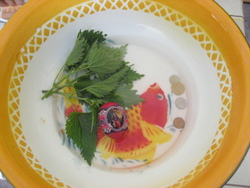 Since we're not getting buds and flowers this early in the season, it stands to reason that some things will be different from what I was used to back in my home country. For example, on Palm Sunday (one week before Easter) instead of adorning the church with blooming willow branches, here we have actual palm leaves - though I don't know where from. I miss those willow branches and I hope to meet them soon in a park near me!
Since we're not getting buds and flowers this early in the season, it stands to reason that some things will be different from what I was used to back in my home country. For example, on Palm Sunday (one week before Easter) instead of adorning the church with blooming willow branches, here we have actual palm leaves - though I don't know where from. I miss those willow branches and I hope to meet them soon in a park near me!
Also, one of my favourite Easter traditions back in Romania was washing my face right after the midnight church service: in a basin filled with water, one placed a painted egg, a shiny coin and a nettle, so that the person washing their face would be, for the rest of the year, beautiful as the egg, loved as money and fierce as a nettle. I haven't been able to do that for years now, due to the absence of nettles at this time in Montreal. Can anyone maybe help me find some?
This being said, Happy Easter to everyone! Hristos a înviat! Христос воскрес! Χριστὸς ἀνέστη!
Photo credits:
4. Kulich - http://en.m.wikipedia.org/wiki/Kulich
5. Tsoureki - http://www.sheridanrogers.com.au/tsoureki-greek-easter-bread-2/
6. Pasca - http://ro.wikipedia.org/wiki/Fi%C8%99ier:Pasca.JPG
7. Holy Epitaph procession - photo by Andriani T.
8. Romanian Orthodox Easter celebration - www.cbc.ca April 19, 2021
Sources:
http://en.wikipedia.org/wiki/Easter
Easter traditions - painted eggs: http://www.rounite.com/2008/04/18/painted-eggs/
Personal interview - Andriani T., April 5
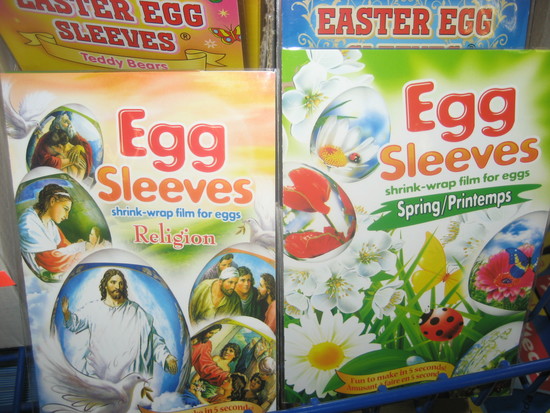
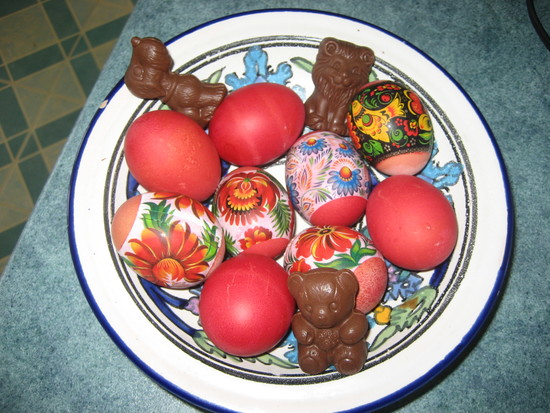
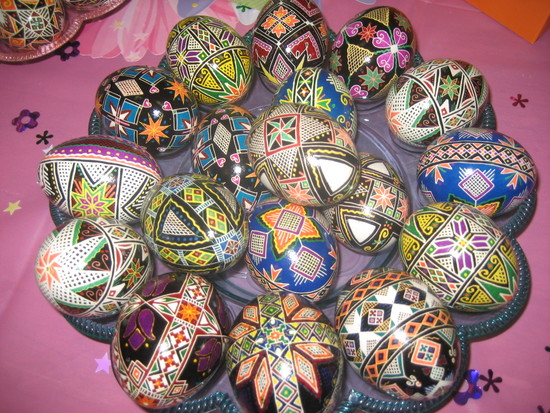
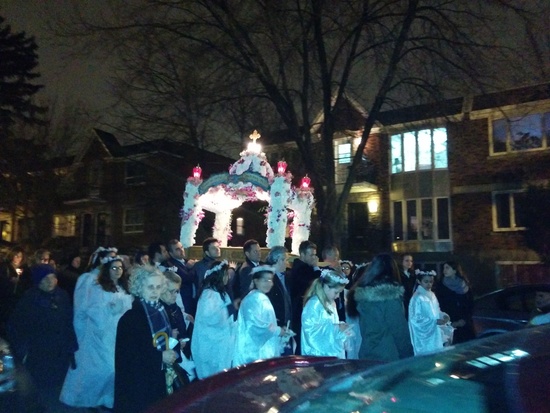
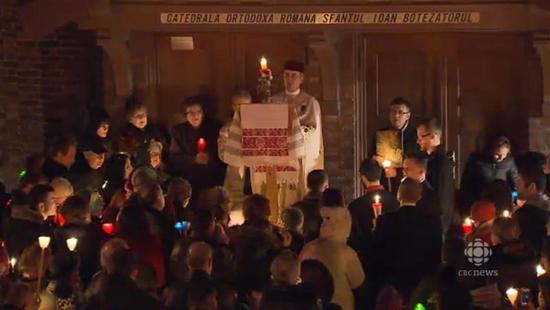
Leave a comment